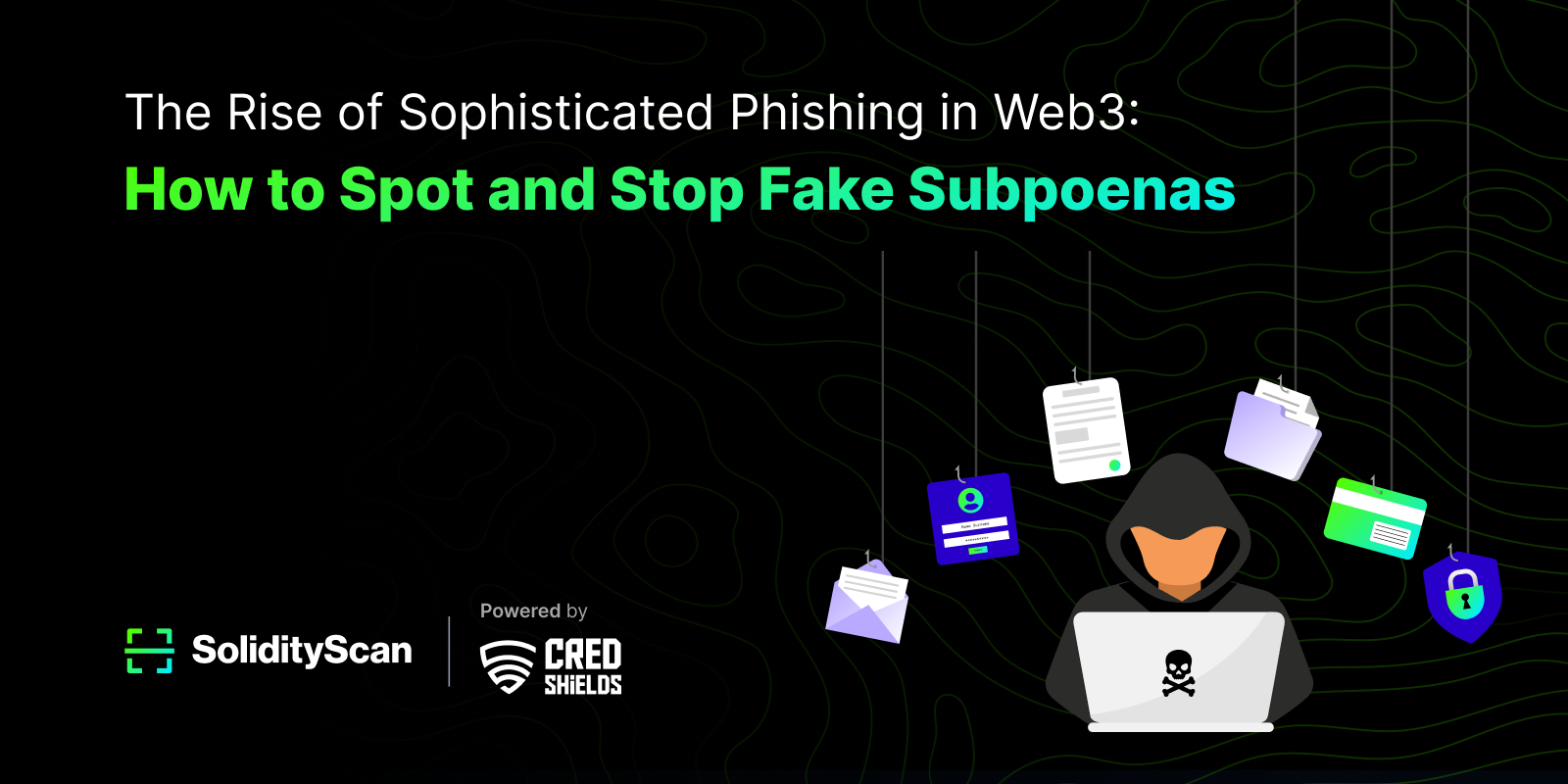Imagine receiving an email from “Google Legal” with a subpoena requesting your cryptocurrency wallet information—only to discover it was a fraud that has emptied your savings. On May 2, 2025, stories emerged of scammers mimicking law enforcement with falsified subpoenas and targeting Web3 users in a terrifying new wave of phishing assaults. With phishing costing the crypto industry $2.3 billion in 2024 alone, these sophisticated frauds should serve as a wake-up signal to everyone involved in the decentralized ecosystem. At CredShields, we want to help you stay one step ahead. In this post, we’ll explain how the false subpoena scam works, offer five practical techniques to defend yourself, and demonstrate how our cloud-based pentesting tool secures Web3 platforms.
The Anatomy of the Fake Subpoena Scam
Phishing on Web3 has progressed from sloppy emails to highly realistic traps. The most recent fraud comprises faked subpoenas appearing to be from Google or law enforcement, pushing users to provide wallet information via bogus forms or QR codes. These attacks take advantage of Web3’s trust-based environment, which leads users to believe that decentralized systems are fundamentally safe. Scammers are increasingly employing AI to create convincing communications, imitating official tones and emblems to avoid suspicion.
What is this swindle particularly dangerous? It focuses on human psychology, not simply code. Unlike smart contract attacks, phishing is based on social engineering, persuading users into exposing private keys or linking wallets to malicious websites. What was the result? Millions of dollars in assets have been taken, eroding faith in Web3 platforms. Understanding these dangers is crucial for everyone who owns cryptocurrency, develops it, or runs a firm.
5 Ways to Spot and Stop Phishing in Web3
Don’t fall victim to the next fake subpoena. Here are five actionable steps to protect yourself and your Web3 projects:
- Verify Sender Domains: Scammers use lookalike domains like “google-legal.com.” Always check the exact email domain (e.g., “@google.com”) and avoid clicking links in unsolicited messages.
- Beware of QR Codes: Never scan QR codes from emails or letters claiming to be “security updates.” They often lead to wallet-draining sites.
- Enable Multi-Factor Authentication (MFA): Add MFA to your wallets and accounts to block unauthorized access, even if scammers get your credentials.
- Check for HTTPS: Before entering data on any Web3 platform, ensure the site uses HTTPS. Non-secure sites are phishing red flags.
- Educate Your Team: Train your team to recognize social engineering tactics, like urgent legal demands. Developers audit user-facing forms to prevent phishing vulnerabilities.
These steps are a start, but staying secure in Web3 demands proactive tools and vigilance.
How CredShields Fights Phishing
At CredShields, we understand that phishing is Web3’s Achilles heel. Our cloud-based pentesting software helps startups and businesses keep ahead of frauds like the phony subpoena attack. We employ AI-driven scans to uncover vulnerabilities in your Web3 apps—unsecured APIs, poor user interfaces, or phishing-prone forms—30% quicker than traditional approaches. Our continual monitoring detects dangers before they escalate, saving you time and money.
Whether you’re building a DeFi protocol or an NFT marketplace, CredShields delivers scalable, cost-efficient security. Curious? Sign up for free to see how we protect your platform from phishing and beyond.
Stay Safe in Web3
The fake Google subpoena fraud serves as a sharp reminder that while Web3 promises decentralization, it is not immune to human mistake. You may secure your finances and initiatives by remaining watchful and implementing cutting-edge security measures. Share this post to spread the news, and follow CredShields for more Web3 security tips.
Together, we can make Web3 safer for everyone.

